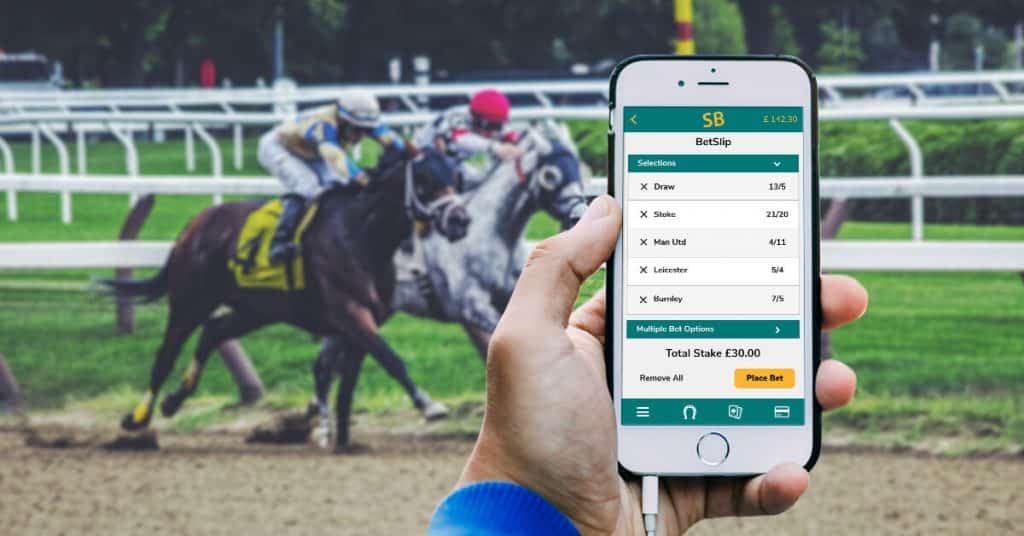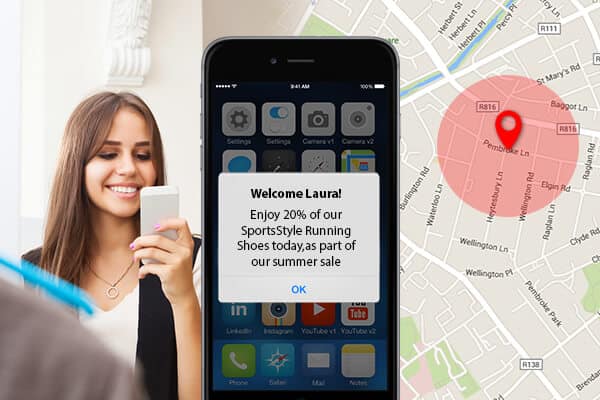Location-based mobile marketing provides endless opportunities to engage with consumers in the right time at the right place.
Through the use of innovative mobile technology such as Beacons and Geo Fencing, companies can now communicate with their customers through timely, relevant messaging, while also gathering valuable data on user demographics and behaviour.
But what is the exact difference between these two location-based technologies and how can they improve the customer experience?
Location Services
To explain the technical background, this technology is made possible through the extension of Location Services on a customer’s mobile device. In the case of Beacons, a Bluetooth Low Energy signal is also required as this determines the customer’s proximity to a particular Beacon. In both cases, the app users you will reach are those who have agreed to receive notifications and allow location services for the app in question.
Beacons
Let’s take a look at Beacons first. This is a piece of hardware that can be placed in a particular location – it’s function is to simply transmit a signal. The app on a customer’s smartphone then registers this signal and relays the data back to the mobile marketing provider. The provider may then automatically send a personalised push notification or in-app message to the customer. This is automated location-based mobile marketing.
The key here is to ensure the communication is contextually relevant. If the content isn’t relevant to the user, it is likely to get pushed aside.
In the case of a sports retail outlet, for example, the notification should be based on a customer’s in-app preferences, location and previous shopping habits. The shopper, in question, may have previously placed a certain brand of running shoes in their shopping cart within the app but then subsequently exited the sales funnel without purchase.
Using the Beacons, the shop can then send a personalised notification to the user when in-store and advise them of an exclusive promotion on this particular product. Beacons have much more precise targeting capability than Geo Fencing from a few metres down to about half a metre in our experience.
Geo Fencing
Geo Fencing establishes a virtual boundary around a real-world geographical area and is as simple as dropping a pin on a map within our mobile marketing platform. Geo Fencing has wider and less precise targeting abilities with a minimum targeting range of about 100 metres expanding out to a city district or greater if required. An example of this would be to target users entering an airport and provide them with a personalised update of a delay to their scheduled flight departure time.
Beacons & Geo Fencing in action
XtremePush offers location-based-targeting as part of our mobile marketing automation platform, one of our clients being Where It’s Live. Due to the success of an initial pilot programme of 300 iBeacons in the Dublin area, the company is now gradually rolling out the technology nationwide, with a current total of 500 iBeacons.
Where It’s Live, utilises iBeacon technology to alert their app users of food and drinks promotions in local bars and restaurants. If a customer walks past one of their iBeacons when entering a bar, for example, they will receive a push notification alerting them of a sponsored drinks promotion on that particular night. The company also utilises Geo Fencing during key sporting events, such as the upcoming Rugby World Cup, to inform match-goers of drinks promotions in nearby bars around the stadium.
Both Geo Fencing and iBeacon technology are designed to compliment rather than conflict with each other. The overall aim is to deliver contextually relevant app engagement, while providing the company with a deeper understanding of the users offline behaviour, such as their entry, exit and dwell time in the particular physical location.
XtremePush offers iBeacon and Geo Fencing as part of our end-to-end mobile marketing cloud platform. The platform allows you to efficiently engage at the right time with the right content in the right place. If you would like to find out more information, please contact our team directly and we would be happy to provide your company with a free consultation.













